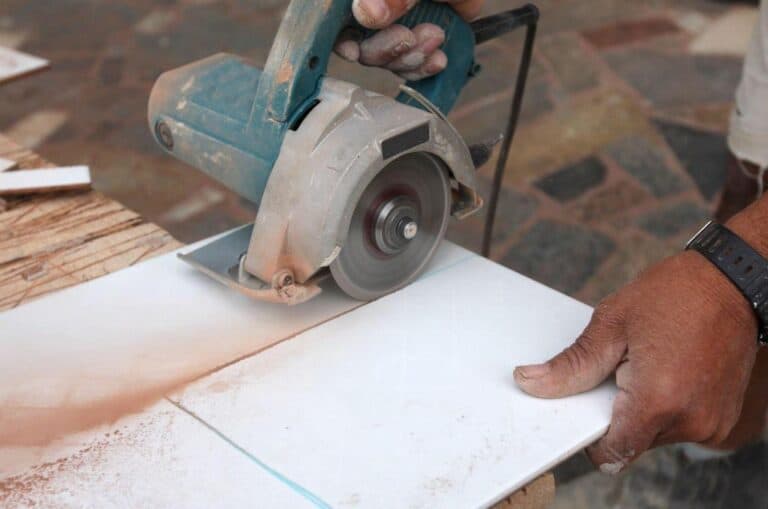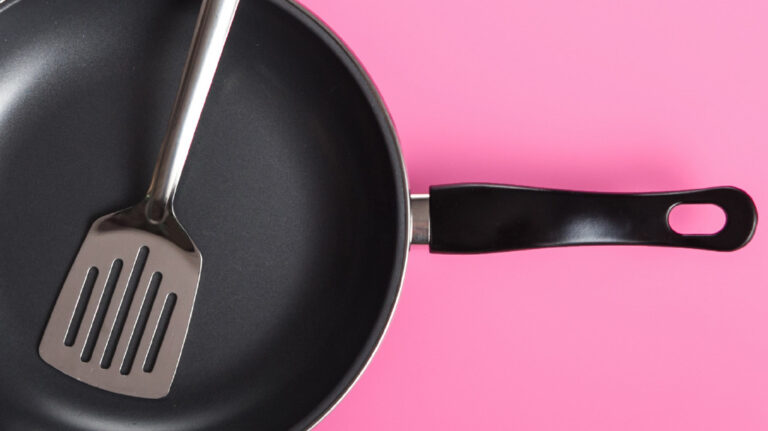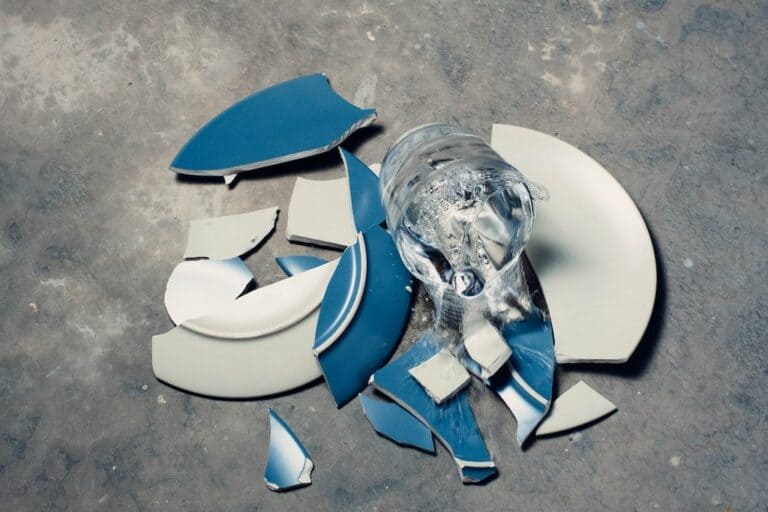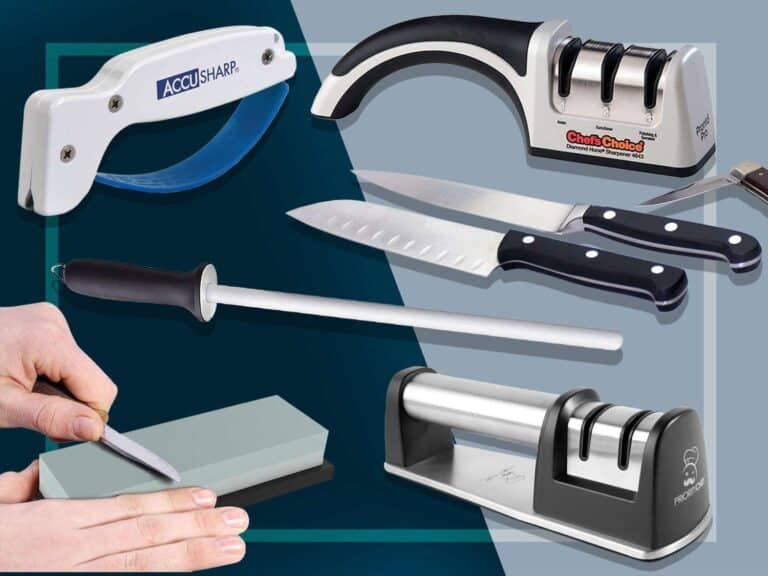Is Ceramic Easily Breakable? (Facts You Should Know)
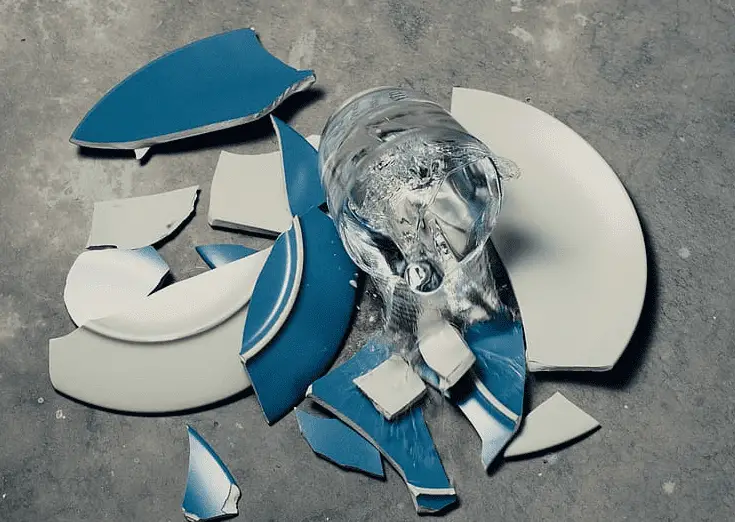
Ceramic is a popular material for items such as dinnerware, bathroom tiles, and building materials. Most ceramics are made of clay that can be molded and shaped into various shapes. Each piece is unique and has its own design.
People often assume that ceramic is rugged and will not break easily. Ceramics are often considered to be more durable than other materials, but is this really true?
Ceramic is a very sturdy material, but it can break if it is not treated properly. Ceramic tiles, for example, can shatter if they are stepped on wrongly or if they are dropped. Because of this, it is important to be careful when using ceramic products.
In this article, we will explore the breaking point of different types of ceramic materials and see if they live up to their reputation.
Definition and Type of Ceramic
Ceramic is a type of inorganic, non-metallic material made from clay, minerals, and other natural materials that have been fused together at high temperatures. Ceramic materials have a high resistance to wear, corrosion, and high temperatures. They are also very strong and hard. They also have excellent electrical and thermal insulation properties.
There are many types of ceramics, each with their own unique properties and characteristics. Some of the most common types include:
1. Traditional ceramics: These are made from clay and other natural materials and are used in a wide range of applications, including pottery, bricks, and tiles.
2. Technical ceramics: These are engineered ceramics that have been made to meet specific technical needs. Examples include ceramic cutting tools, ball bearings, and electronic components.
3.Advanced ceramics: These are high-performance ceramics that have been made to meet the most demanding technical requirements. Examples include ceramic armor, fuel cells, and aerospace components.
4. Bioceramics: These ceramics are used in medical and dental applications, such as artificial joints, dental implants, and bone scaffolds.
It’s worth noting that ceramics can be fragile and brittle and are more prone to breaking and chipping than other materials like metals, glass, and some plastics. However, with proper care and handling, ceramic objects can last for many years.
Factors that Affect Ceramic Durability
1. Composition and Purity of Ceramic Materials
How long ceramics last depends a lot on how pure they are and what they are made of. For example, ceramics that are made from high-purity raw materials will generally be stronger and more durable than those made from lower-purity materials. Also, ceramics with a uniform mix of materials tend to last longer than those with a mix of different materials.
2. Methods of Manufacturing
The method of manufacturing can also affect the durability of ceramics. For instance, ceramics that are made by injection molding are usually stronger and last longer than ceramics that are made by slip casting or pressing. Additionally, ceramics that are sintered at high temperatures will generally be stronger and more durable than those that are sintered at lower temperatures.
3. Temperature and Pressure
Temperature and pressure can also affect the durability of ceramics. For example, ceramics that have been exposed to high temperatures for a long time tend to be weaker and more likely to break than ceramics that have been exposed to lower temperatures. In the same way, ceramics that are put under high pressure tend to be weaker and more likely to break than ceramics that are put under lower pressure.
It’s worth noting that the durability of ceramics can also depend on the specific application they are used in. Ceramics that are used in high-stress situations, like aerospace or automotive parts, are usually made to last much longer than ceramics that are used in low-stress situations, like pottery or decorative items.
How Easily is Ceramic Breakable?
Ceramic is incredibly hard and resistant to scratches and other types of damage. However, because of its molecular structure, it is susceptible to breaking. If a ceramic case is dropped from a height of a few feet or more onto a hard surface, it is likely to shatter.
When it comes to breakability, ceramic is definitely one of the most fragile materials around. Ceramic tiles, cups, and even pieces of art can be easily broken if not handled carefully. However, with a bit of knowledge and some careful handling, ceramic can be safely used in many everyday situations.
Why Do Ceramics Break Easily?
Ceramics are famously tough and durable, but they can also break easily. There are a few reasons for this.
- Ceramics are typically hard and brittle, meaning they fracture easily due to their inability to shift particles along slip planes like metals can. This is because of the combined ionic and covalent bonding mechanism of ceramics. Ceramic items can break if they suffer from heavy or extreme force, or if they are mishandled or not cared for properly.
- The manufacturing process of ceramics can also contribute to their tendency to break easily. Ceramics are made by mixing a powdered clay mixture with water and shaping it into the desired form. The ceramic is then fired at high temperatures to harden it. If the firing process is not done correctly, the ceramic may not be fully hardened and may be more prone to breaking.
- Another factor that can contribute to the brittleness of ceramics is the presence of impurities or defects in the material. These impurities or defects can weaken the ceramic and make it more susceptible to breaking.
- Ceramic items are also prone to cracking and breaking when exposed to drastic temperature changes, such as hot and cold water, or when they are dropped or struck with a hard object.
So Why Are Ceramics Brittle?
- The main reason ceramics are brittle is their atomic structure. Most ceramics are made of tightly packed atoms that are kept together by both covalent and ionic bonds. These bonds are relatively strong, but they do not allow for much movement or flexibility, making it difficult for the ceramic to bend or deform without breaking.
- Ceramics lack the ability to absorb energy through plastic deformation, which is a property of ductile materials. This makes ceramics more likely to fracture when subjected to stress.
- Ceramics are brittle materials due to their low friction and low thermal expansion properties. This makes them more likely to break when put under stress, like when a pot is dropped or heated. Also, ceramics usually have a thin layer of oxide on them that can be easily worn away.
Additionally, ceramics are generally poor thermal conductors and have a low coefficient of thermal expansion, which means that they can’t expand or contract as much as other materials when exposed to changes in temperature. This can also contribute to the brittleness of ceramics, as they are more likely to crack or break when exposed to temperature changes.
What Breaks Easier, Ceramic or Glass?
Ceramic and glass are two common materials that break easily. However, ceramic breaks more easily than glass. There are a few reasons for this.
Glass is made of tiny crystals that are held together by heat and pressure. When these crystals break, the glass can reform into a new pattern. Ceramic, on the other hand, is made of large molecules that don’t break as easily. Ceramics can also contain impurities that may add to the strength of the material.
Ceramic is also more brittle than glass. This is because it’s made up of small grains that are arranged in a repeating pattern, while glass is made up of large grains that are randomly dispersed. Ceramics’ smaller, more regularly arranged grains are more vulnerable to breaking.
What Is the Strongest Ceramic?
Ceramics are materials that have been used for millennia for objects including pottery, tile, porcelain, and other types of ceramic art. Today, ceramics are used in engineering and other fields where their strength, heat resistance, and durability are advantageous.
While there is no definitive answer to this question, some ceramics may be stronger than others. A ceramic material must have a high refractive index. This means it can reflect light, but not absorb it. The higher the refractive index, the harder it is to break.
According to US researchers, a new synthetic material with a structure comparable to nacre – mother-of-pearl – is possibly the strongest ceramic-based substance yet manufactured. They believe the low-density, high-strength material might be used in aeronautical buildings.
Why Are Glass Ceramics Not Transparent?
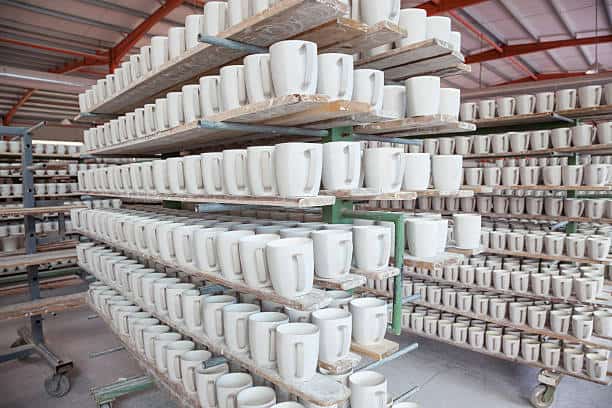
Glass-ceramics are not transparent because of the way they are made. The glass is first heated to a high temperature, and then it is poured into molds. The heat causes the molecules in the glass to break down into smaller pieces. These smaller pieces have a greater distance between them, which means that they do not interact with each other as easily as the larger molecules. This makes glass-ceramics less transparent than other types of materials.
Glass ceramics may not be transparent due to their polycrystalline structure. In polycrystalline materials, the light will be spread out at the grain boundaries if the index of refraction is not the same everywhere and the grains next to the border have different crystallographic orientations.
How to Make Ceramic Last Longer?
Ceramics are durable materials that can last for many years with proper care. However, there are some things to keep in mind when caring for your ceramic pieces so that they will last as long as possible:
- Always use a non-abrasive cleaning agent when cleaning your ceramic pieces.
- Don’t expose your ceramic pieces to extreme temperatures or direct sunlight.
- Avoid knocking your ceramic pieces against hard surfaces.
- If you’re able to, hand wash your ceramic pieces as opposed to using a dishwasher.
- Never use abrasive cleaning agents on your ceramic pieces.
- Do not put your ceramic pieces near or under a heat source.
- Do not overheat and/or bend your ceramic pieces.
- Avoid of using metal tools or any form of abrasive to clean your ceramic pieces.
- Avoid dropping or otherwise harming your ceramic pieces.
- Do not place ceramic pieces in the microwave.
- Be cautious when placing your ceramic pieces on a countertop surface that may have sharp edges or corners.
- Do not put your ceramic pieces on any surface that is damaged, cracked, or chipped.
- Know what chemicals you use in your home and be aware of the potential damage they may cause to your ceramic pieces.
- If you live in an area that experiences extreme temperatures, do not place your ceramic tile outside in direct sunlight or near heat sources.
- Do not place your ceramic pieces in direct contact with any chemicals such as gasoline, paint thinner, or bleach.
- Be aware that some foods and drinks may stain your ceramic pieces.
Final Thought
Ceramic is a material that is both strong and smooth, yet it is also breakable. They are often used to make tile, dishes, and figurines, but they can also be used to make other things, too. Ceramic is manufactured from clay that has been solidified by being fired to a very high temperature.
In conclusion, ceramic is easily breakable. This should be taken into consideration when choosing dishes or other ceramic items to be used for everyday purposes. Although it is beautiful and timeless, it is not the most durable material.

